The New Year can be the launch pad for great positive change and a time to commit (or recommit) to good eating habits. Those who are non-vegan are often looking to become healthier but get overwhelmed the first few weeks when they try to analyze nutritional advice from countless sources (many of which can be misleading and unreliable), and they get discouraged when following the latest fad diets that fail to satiate and aren’t sustainable. Those who adhere to the vegan lifestyle can share these 5 guiding steps to help educate family and friends who may be more open now than at any other time of the year. Human health is one pathway that can lead people to the vegan way of life.
The evidence is strong and the verdict is in: We need to eat more foods that come from plants. Healthcare professionals encourage us to eat better and won’t deny that the benefits of a diet high in vegetables and fruits will assist with weight management and help prevent and reverse chronic health conditions. So how do you start the vegan journey that provides the best chances for optimum health?
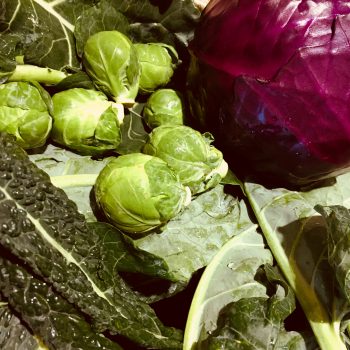
1.) Put more plants on your plate
This sounds ridiculously simple (and it is). When no longer the token side dish, plant foods can easily become the focal point of your meals. As you add nutritious fruits, vegetables, whole grains, and legumes to your diet, they will naturally push unhealthier foods off your plate. Consider minestrone soup and a salad, hummus wraps loaded with veggies, and black bean chili topped with colorful corn salsa. Plant foods contain macronutrients, micronutrients, fiber, antioxidants, and phytonutrients. They have everything needed to run the human body at peak performance. In addition, antioxidants and phytonutrients transfer their protective powers from the plant to us, so we’re not only feeding our stomachs but fueling our cells to help prevent chronic diseases such as heart disease, diabetes and cancer.
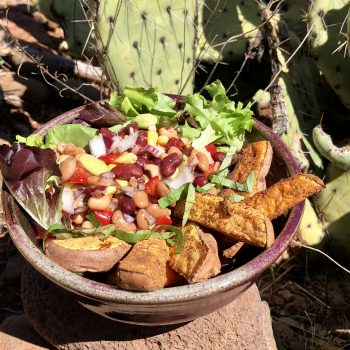
2.) Fill up on fiber
There is a wide selection of foods that contain healthy fiber and every one of these is a plant food: beans, vegetables, fruits and whole grains. Plants by the very nature of being plants contain the roughage that not only cleanses your innards but fills you up. Fiber is also key in removing surplus hormones and cholesterol to prevent them from building up in your body. Additionally, fiber helps trim away extra pounds by controlling appetite naturally. Foods high in fiber are also inherently low in calories and they alert your brain when your stomach is full before you devour excess calories. Start by adding oatmeal and berries to your morning breakfast or a side salad filled with colorful veggies to your typical dinner. These options contain high amounts of fiber and they can be easily introduced into meals you (or the person you’re trying to influence) is already eating.
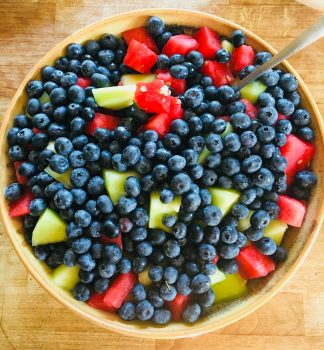
3.) Consume whole foods versus faux foods
How many ingredients are in a head of broccoli? Trick question? You don’t see an ingredients list attached because this is a whole food – it is a broccoli and it tastes like broccoli. You get what you see and taste. However, a frozen broccoli quiche might alarm you if you flip over the box and read the ingredients list. Not only will you see a long list of items, you may not recognize the majority of additives, chemicals, and flavor enhancers present to make the food “shelf stable.” If a food item does not appear to age and go bad, it is probably not a food you should be eating.
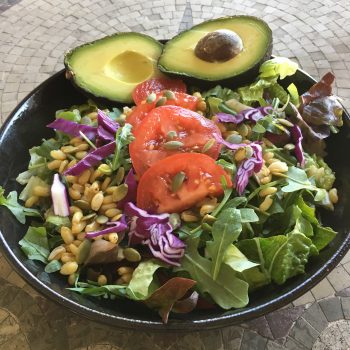
4.) Eat the rainbow
Walk the produce aisle of the grocery store and choose vegetables and fruits of varied colors and hues. Select different colors and sizes of beans from the dry goods bins. Choose a variety of seeds and nuts. The wider you cast your color net, the higher your intake of healthy nutrients will be, and, thus, the healthier you will be.

5.) Don’t think too hard
Often people who start to eat more plants become worried they won’t get enough protein or iron or calcium or…fill in the blank. Realize that foods don’t work in isolation; eating is a marvelous, natural, synergistic process. Rather than analyze and worry, enjoy. Eat a variety of plants. Eat plenty of whole foods. Eat mindfully. Eat until satiated. The beauty of eating a whole food, plant-based diet is that when you focus on what you eat, rather than how much you eat, calories and nutrients take care of themselves.
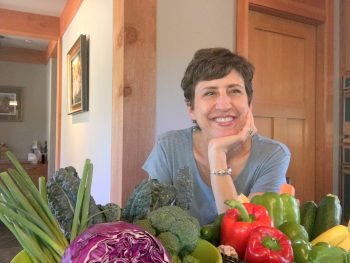 Chris Kalinich is the owner and culinary instructor of Plant 2 Platter, working with individuals and groups to promote positive life change through a variety of classes which center around evidence-based nutrition education complimented with practical life application. She is a PCRM-Certified Food for Life Instructor, MSVA-Certified Vegan Lifestyle Coach & Educator, Nutrition Coach Practitioner for the Healing Consciousness Foundation, and a board member of Healthy World Sedona. When not providing presentations and cooking demos in her local community of Sedona, Arizona, she enjoys teaching and motivating others on Facebook, Instagram and YouTube.
Chris Kalinich is the owner and culinary instructor of Plant 2 Platter, working with individuals and groups to promote positive life change through a variety of classes which center around evidence-based nutrition education complimented with practical life application. She is a PCRM-Certified Food for Life Instructor, MSVA-Certified Vegan Lifestyle Coach & Educator, Nutrition Coach Practitioner for the Healing Consciousness Foundation, and a board member of Healthy World Sedona. When not providing presentations and cooking demos in her local community of Sedona, Arizona, she enjoys teaching and motivating others on Facebook, Instagram and YouTube.


I am very glad that I signed up to get th
the emails. They inspire me to keep a vegan lifestyle. Vegetarian for more tha 30 years, the transition has not been too
too difficult. Victoria Moran, thank you
For writing such helpful books.
Marjorie